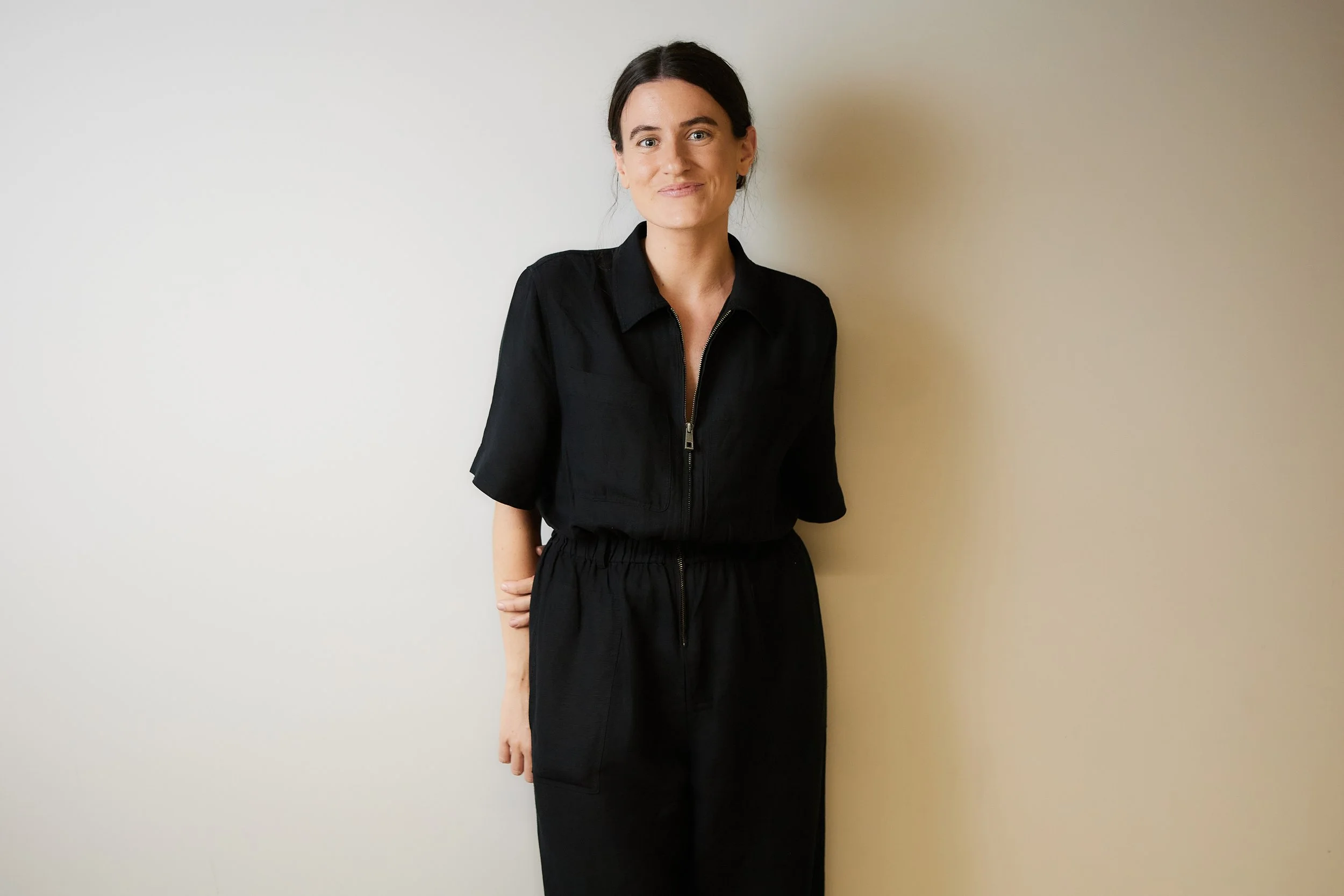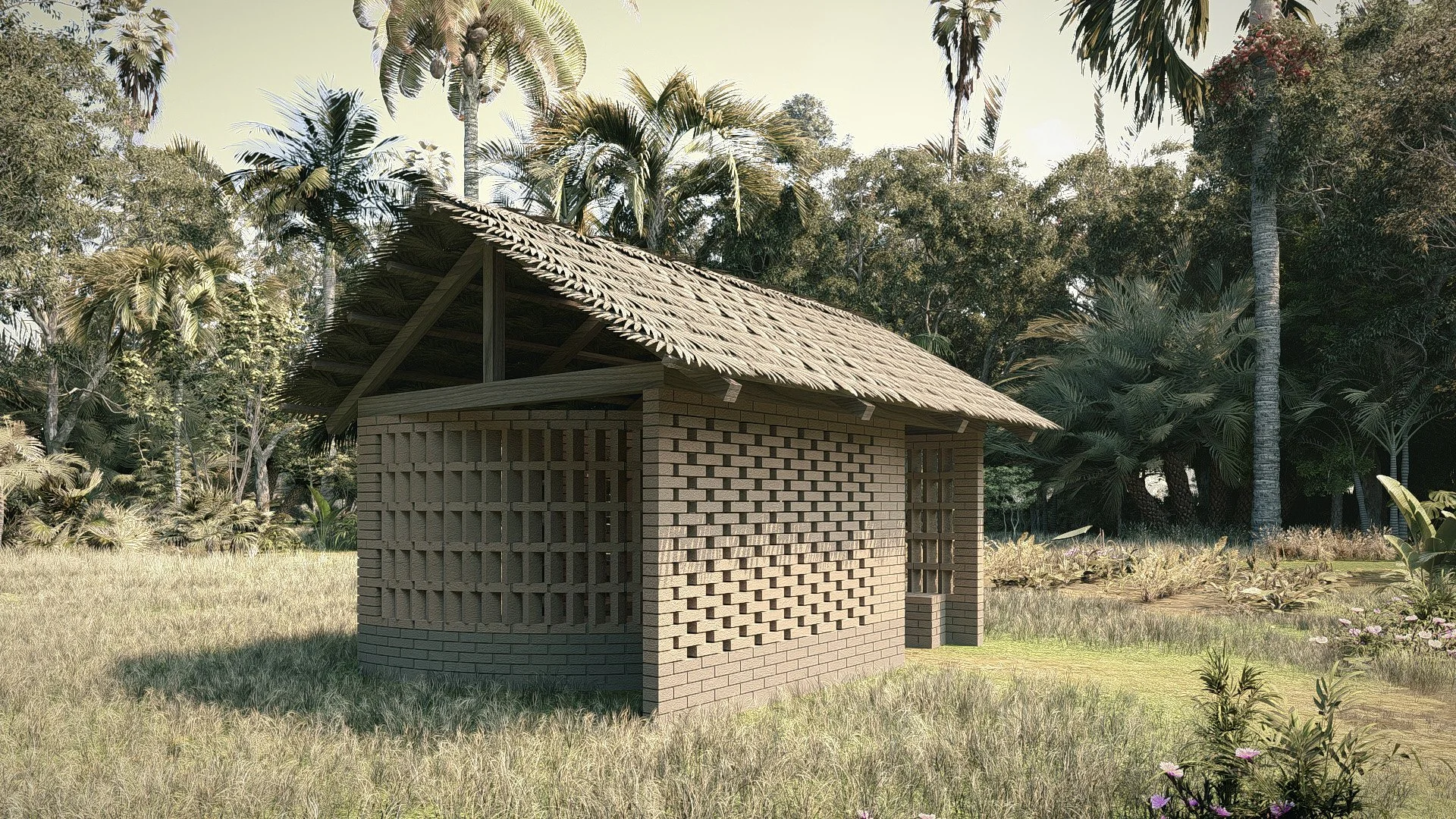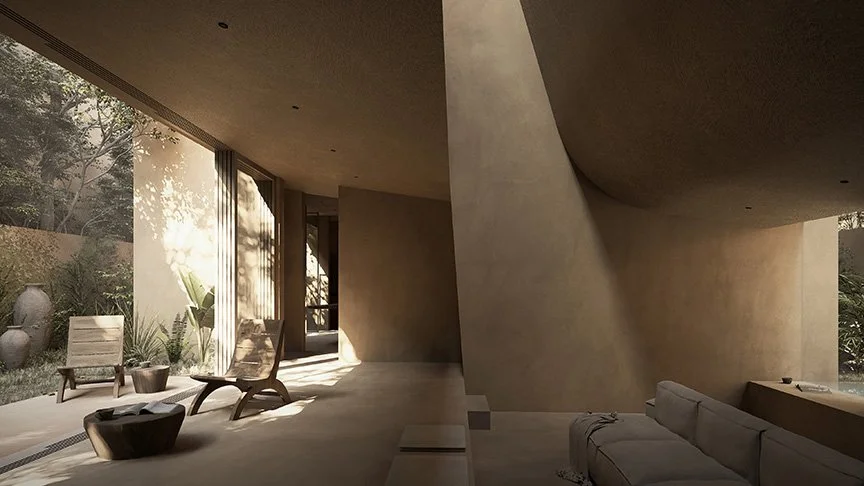Instinctual Mindsets: ERENTIA's Alejandra Esteve on Emotional Connection, Long-term Coherence, and Following Intuition
Portrait by Maria Jose Valido
By Julia Gamolina
Alejandra Esteve is a spanish architect with a strong commitment to socially responsible and sustainable design. She is the founder of ERENTIA, a studio based in Madrid and Mexico. Previously, Alejandra has worked in various architectural firms alongside internationally renowned architects such as RCR Arquitectes, David Chipperfield, and Frida Escobedo, among others.
Throughout her career, Alejandra Esteve has demonstrated a steadfast commitment to using architecture as a means to improve quality of life and generate a positive impact on society. In 2014, she collaborated with the Vicente Ferrer Foundation in Anantapur, India, contributing to the construction of hospital and a school initiatives aimed at improving the well-being of vulnerable communities. In 2017, Alejandra joined ASUA Construye in Estado de México, where she took part in the construction of prefabricated concrete homes for low-income families living in marginalized neighborhoods.
She earned her degree in Architecture from IE University, and further enriched her global architectural perspective through studies at prestigious international institutions, including the Architectural Association (Summer Program, 2014) and Universidad Anáhuac (Erasmus Program, 2017).
JG: Your work spans practice, research, and social and educational initiatives. What are you focused most on for the rest of 2025? What would you encourage our readers to be thinking most about and paying attention to this year?
AE: Right now, we’re in a moment of growth and intense activity within the studio. As a result, we sometimes struggle to dedicate time to research unless it is directly tied to a project. Without a doubt, one of the most meaningful milestones for us this year has been within our foundation: the development of the practical workshop where we’ll build a community reading pavilion for the preschool in the rural village where we’re working. This marks the official start —and completion—of Phase 0 of the project, and it’s something that will leave a deep imprint on the whole team at Erentia, not only because of the work behind it, but also because of the incredible people who have become part of it.
The Erentia studio by by Maria Jose Valido.
Now let's go back a little bit — tell me about why you studied architecture, and how you chose where you studied architecture.
I had always been drawn to creative subjects. However, partly due to family tradition, I focused my academic path on business during school. In fact, when I applied to university, I initially applied to study business and economics. I was accepted at Bocconi, and I still remember attending one of their weekend events introducing the program after which I came back home feeling very “blocked” and with the certainty of not wanting to study that.
By then, most university application processes were already closed, and I believed I wasn’t capable of studying architecture, since I had dropped technical drawing and physics in high school. But during an interview with the head of architecture at IE University, I remember him saying something I never forgot: “If the rest of our lives had to be defined by decisions we took at fourteen, the world would make no sense.” What really attracted me to IE’s program was their strong focus on hands-on learning. They encouraged students to gain real-world experience by working at architecture studios around the world while continuing their studies. This gave us the opportunity to learn architecture both academically and through direct exposure to the realities of the profession — something that shaped the way of understanding the discipline at a young age.
“Choosing long-term coherence over short-term gain wasn’t easy, especially in a delicate moment for the studio, but it reinforced the kind of practice we’re committed to building.”
Tell me about your experiences working for various offices before starting your practice. What did you learn that you still apply today?
I haven’t had very long work experience in other studios, because shortly after finishing my studies I started working for Frida Escobedo, and soon after that I had the opportunity to develop a very interesting project independently. I tried to combine both, but it was difficult so I had to leave my job, and somehow, like that, Erentia was officially born.
Working at Frida Escobedo Studio taught me a lot about material exploration and research. I found it incredibly enriching to see how they work from the smallest scale and material detail to the overall formalization of the project. What’s particularly interesting is that the design doesn’t start only from form and later adapt to the material—it often emerges from a deep understanding of the material itself, letting it shape the architectural gesture.
The place where I learned the most—and that has most influenced how I want to practice—was definitely RCR Arquitectes. What happens there is something truly special. They are completely isolated from the world, and yet deeply connected to it, working on international projects while never losing sight of who they are and what they stand for. It’s inspiring to see how fiercely they defend their way of understanding and practicing architecture. One of the most valuable lessons I took from working there, and something I try to apply every day in our studio, is the importance of the creative process—the initial research that feeds a project—and, above all, the need to move and emotionally connect with the people who will inhabit the spaces we create.
By the Erentia Association, courtesy of Alejandra Esteve.
Community Library by the Erentia Association.
Casa Terra by Erentia.
How did Erentia come about? What are your priorities for it as we enter 2025?
Erentia came about from a desire to develop my own architectural practice—and, to be honest, it’s deeply tied to who I am as a person. I realized that through my work, I was trying to shape a way of life that could integrate my passion for architecture with other interests that I still wanted to explore, something that can be difficult to achieve when working for someone else. Erentia began with its first sphere: the architecture studio. Little by little, we found our rhythm as a team and began to shape a shared way of thinking—how we understand and approach architecture within the studio.
The second sphere to take form was the Association, which is essentially a non-profit foundation. It’s actually a project I first tried to initiate back in 2019, after a deeply moving experience I had in Cuba. But the pandemic forced me to put this project on hold as the country was closed for two years, and there was a lot of uncertainty. I knew it wasn’t something I would leave behind, just something I needed some time to come back to with the level of responsibility and maturity it required. At the end of 2023, after returning to Cuba four years later, the second sphere of Erentia officially began.
The third sphere—the Laboratory—grew from a need, especially being such a young team, to keep learning and exploring beyond the day-to-day demands of our projects. One of the things that’s come out of the Lab is El Encuentro, a collaboration with HopefullyArt that brings together architecture and art through intimate dialogues. Our main priorities this year have been to carefully carry out the projects currently under construction. Managing that process from a distance has been a challenge in itself. From the Association’s side, our focus has been to complete Phase 0: setting up a small production line for compressed earth blocks (BTCs), and building a community pavilion that will serve as an outdoor reading classroom for the local preschool in the village we’re working with.
Looking back at it all, what have been the biggest challenges? How did you both manage through perceived disappointments or setbacks?
One of the biggest challenges has been missing out on a few key projects that came our way early on. They were very interesting and significant in scale, but at that point, we didn’t yet have completed built work to support our “credibility”. That lack of constructed projects made it difficult to build full trust, and although there was initial enthusiasm, those opportunities eventually fell through — which was a bit disappointing for a young studio who is just willing to have opportunities to prove itself.
Another major challenge has been standing by our values and the way we understand architectural practice — even when it meant letting go of a project. There was a moment when we had to decline a project that, while financially promising, was completely misaligned with our approach and vision. Choosing long-term coherence over short-term gain wasn’t easy, especially in a delicate moment for the studio, but it reinforced the kind of practice we’re committed to building.
“Never underestimate the power of youth, of not knowing, of being naive and innocent. Oftentimes, that’s where your intuition lies.”
Who are you admiring now and why?
I’m following the work of the Brazilian architect Gustavo Utrabo. I deeply admire the sensitivity and range of experimentation that he brings to his creative processes. The representational tools he uses to explore and express his ideas — from watercolor to models as working tools rather than final outcomes, photography, poetry — is something I believe architecture to be in general. I truly admire the harmony in his work — and, of course, the material exploration. Each of Gustavo Utrabo’s projects is shaped through deep honesty and reflection — about the place, the people, and their stories.
Alejandra Esteve presenting Erentia’s work.
Finally, what advice do you have for those starting their career? Would your advice be any different for women?
Never underestimate the power of youth, of not knowing, of being naive and innocent. Oftentimes, that’s where your intuition lies — who you truly are, a kind of unfiltered thinking that hasn’t yet been shaped by external knowledge, and that can be incredibly valuable and beautiful. As you grow up and you accumulate experience, of course your thinking develops and expands. But often, you return to that primary instinctual mindset. We are constantly receiving a lot of information and references, and being able to develop your own way of thinking — one that’s guided only by your intuition — is something powerful, and something we shouldn’t lose as we grow.
This interview has been edited and condensed for clarity.





